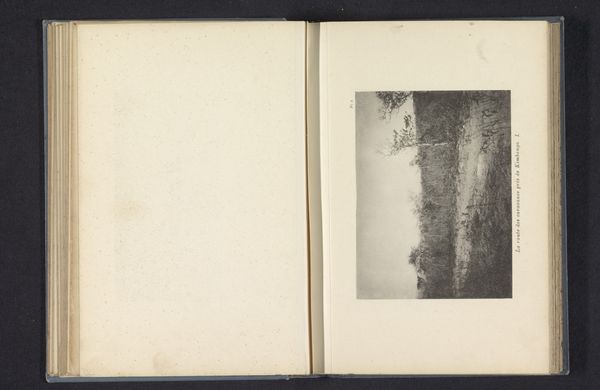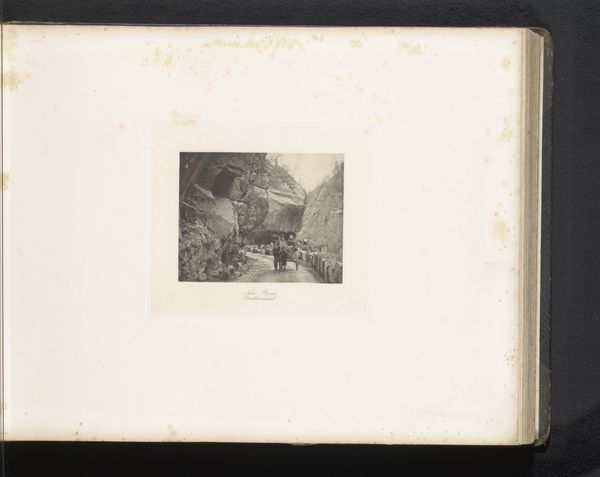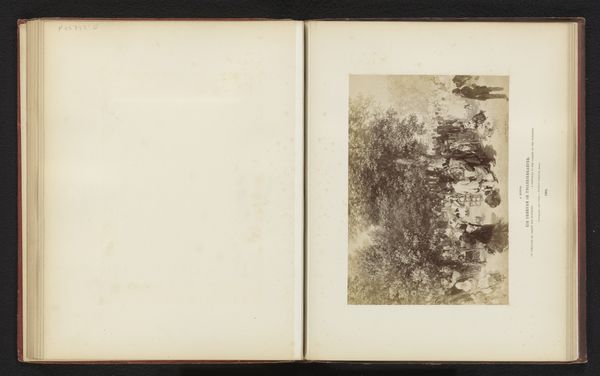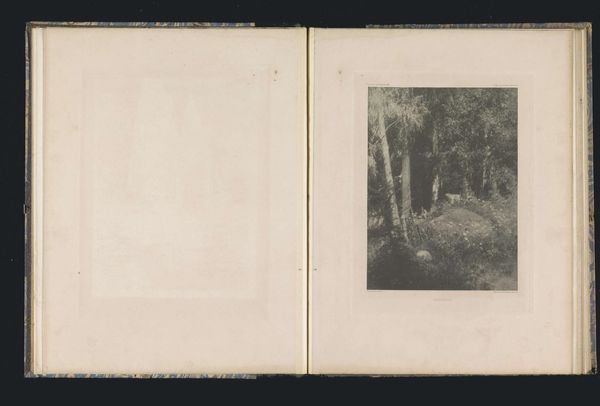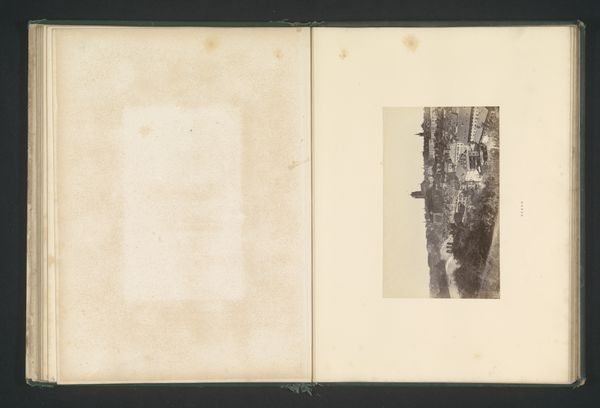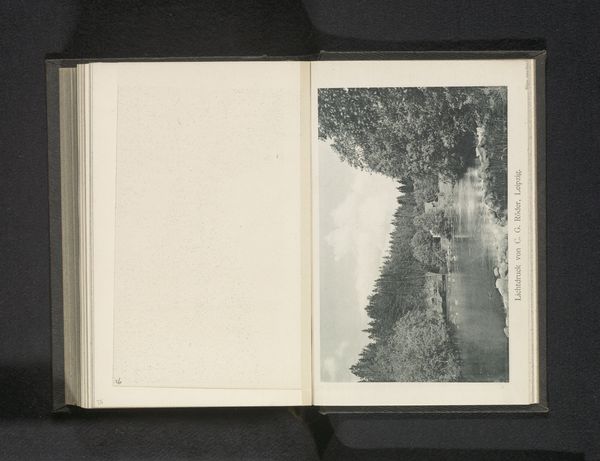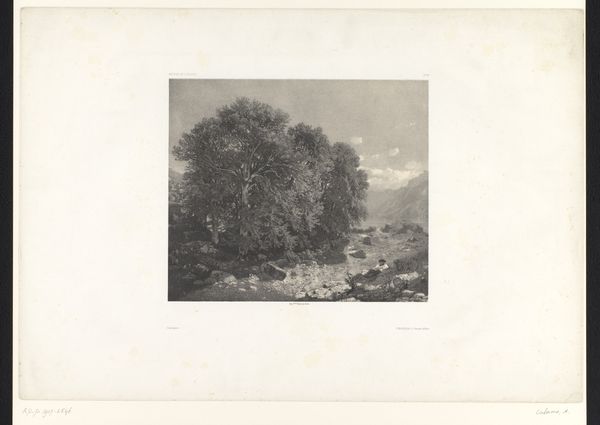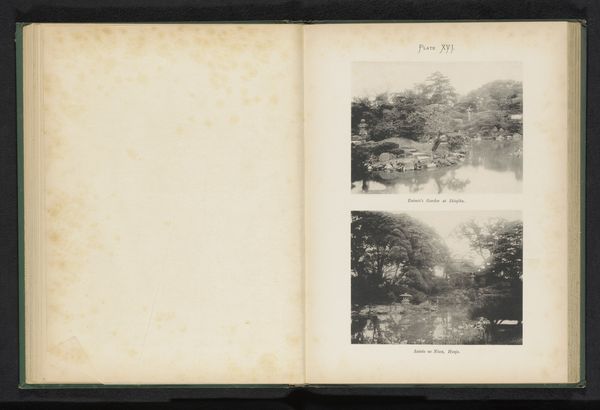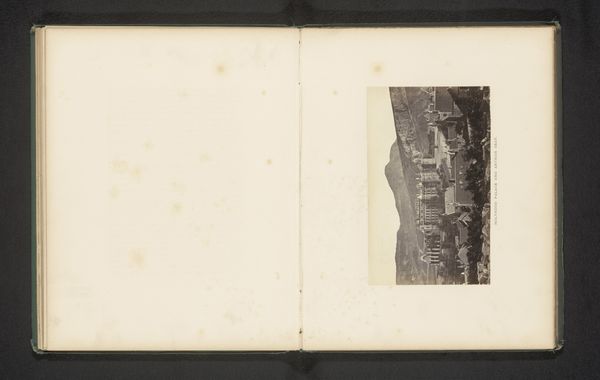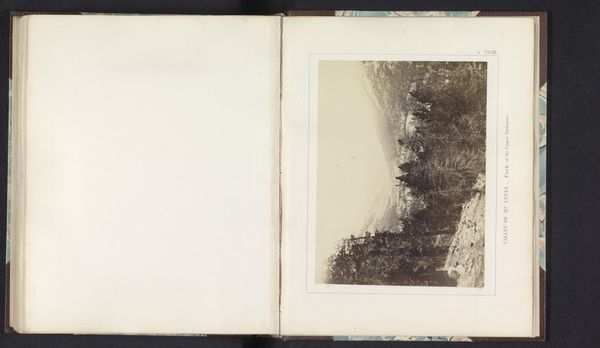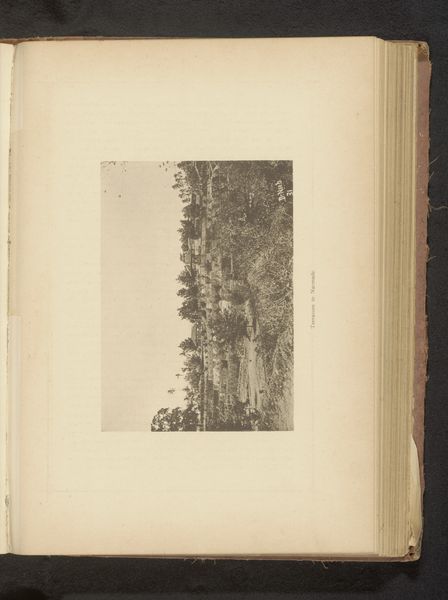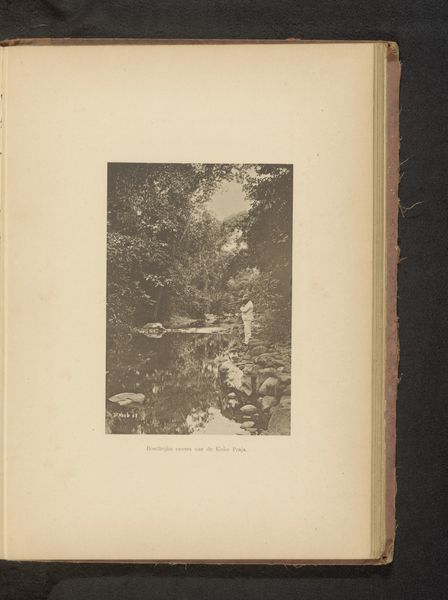
print, etching, photography, graphite
# print
#
etching
#
landscape
#
photography
#
forest
#
mountain
#
graphite
Dimensions: height 92 mm, width 117 mm
Copyright: Rijks Museum: Open Domain
Curator: Here we have "Berglandschap nabij Suldalsosen," a landscape etching, graphite and photograph print, believed to be created before 1893, by Paul Lange. The piece showcases a dramatic mountain landscape near Suldalsosen. What strikes you first about it? Editor: Well, it's overwhelmingly moody. All those grey tones... It feels like a landscape shrouded in a heavy silence. It is so contained by this pristine white space in this album that amplifies the almost claustrophobic scene—dense trees, imposing mountain face, a river cutting through... There’s a beautiful tension there. Curator: I think the photographic elements contribute to that mood. Lange was working in a period when photography was changing landscape representation—it was able to give realistic but not objective representations of the scenery, this might offer a more grounded perspective on nature as this was an era defined by burgeoning industrialization. Editor: I see what you mean. But to me, this isn't about objectivity at all. Look at the way the light filters through the trees, almost dreamlike, the softness of the etched lines softening that "realism." The human impact is subtle, almost hidden within nature's majesty. A lone bridge that hints to life. Curator: And that's interesting, given Lange's context. Landscape art was often tied to national identity and pride, this piece may embody a reverence for Norway's untouched natural beauty. But with the hint to photography it does feel somewhat divorced from that artistic trajectory as it creates almost a visual report about the location instead. Editor: Absolutely. The etching process itself is about building depth and atmosphere. I'm fascinated by that combination of precision and artistic interpretation—this feels both intimate and grand. Curator: It also prompts us to consider who had access to these images back then. Prints made art and these scenic places more accessible beyond the wealthy elite which in turns reinforces the cultural importance to this land to its people. Editor: Indeed. The beauty, even in monochrome, captivates. Makes one wonder about Lange's intentions – a landscape of national pride or an inward escape. Curator: A complex landscape representing complicated issues I suspect. One where history and emotional experience flow together much like the waters shown in the print. Editor: A very astute reading, thank you!
Comments
No comments
Be the first to comment and join the conversation on the ultimate creative platform.
